 Jag läste en bok* om handeln i Europa under medeltiden. Där fångade en bild och en bildtext min uppmärksamhet.
Jag läste en bok* om handeln i Europa under medeltiden. Där fångade en bild och en bildtext min uppmärksamhet.
“Arithmetic demonstrates her art …. she is showing how to calculate by laying out reckoning counters, rather than by using Arabic numerals. For reckoning the table or its covering cloth was ruled with a pattern of lines, which the tapestry weavers have failed to put in”
Intresset var väckt! Hur räknade man? Om hon inte räknar med arabiska siffror – vad räknar hon då med? Romerska siffror? Hur länge användes de romerska siffrorna vid handel? En massa intressanta frågor som rör det praktiska medeltida livet.
Jag började med att leta efter hur ett “räknebord” sett ut. Och det finns en hel del bilder. Oftast är linjerna utritade direkt på bordsskivan. Men det finns också uppgifter om att man haft broderade “dukar” som lämpade sig när man förflyttade sig.
I was reading a book* about trade in Europe under the medieval ages and there was a picture and a text.
“Arithmetic demonstrates her art …. she is showing how to calculate by laying out reckoning counters, rather than by using Arabic numerals. For reckoning the table or its covering cloth was ruled with a pattern of lines, which the tapestry weavers have failed to put in”
This was interesting! How did they count? If not using the arabic numerals what did she then use? Roman numerals? How long was the roman numerals used in trade? Many interesting questions about the practical medieval life.
First I begun to seek for what a counter board would look like. And found a lot of pictures. Often the table are ruled with lines, but you can also find informations of embroderied cloths, suitable for travelling.
 Räknebordet med två summor som ska adderas.
Räknebordet med två summor som ska adderas.
MMDLXXXVII + CCCLXXIII ; 2587 + 373
Även om räknebordet är konstruerat för att räkna med romerska siffror så fungerar det även för arbiska siffror. De medeltida borden hade troligen inga siffror markerade så som mitt. Men det är pedagogiskt – och bekvämt för oss som inte är vana att räkna med romerska siffror!
The counting board with two sums to add up
MMDLXXXVII + CCCLXXIII ; 2587 + 373
The counting board is constructied for the use of roman numerals, but it function even for arabic numerals. The medieval boards had probable no numerals marked as I have on mine. But it is pedagogical – and comfortable for us not used to count with roman numerals.
 De två summorna sammanförda och justerade så att det på linjerna finns max fyra marker och mellan linjerna enbart en marker.
De två summorna sammanförda och justerade så att det på linjerna finns max fyra marker och mellan linjerna enbart en marker.
Ett fantastiskt bra sätt att räkna med de romerska siffrorna. Räkneborden gjorde att det tog lång tid för de arabiska siffrorna att ta över i norra Europa.
Nu återstår att lära sig att även räkna med multiplikation. Det kräver ett annat räknebord med tre kolumner.
The two sums put together and made so it on the lines there are not more than four jetons and between the lines just one jeton.
This is a fantastic way to count with the roman numerals. Because of the counting boards it took long time for the arabic numerals to reach the northern Europe.
Now I must learn to multiplicate. For that I must have another counting board with tre columns.
——————
*Spufford, Power and Profit. The Merchant in Medieval Europe. 2002.
 Under Dubbelkriget i Attemark vävde jag ett par band för en beskrivning om att väva på sommaren – den kommer som Månadens väv i juli. Ett smalt band vävde jag med min örhängesgrind. Med moulinégarn, enkeltrådar, blev det ett smalt tunt band. Två band i olika färger blev ett bokmärke.
Under Dubbelkriget i Attemark vävde jag ett par band för en beskrivning om att väva på sommaren – den kommer som Månadens väv i juli. Ett smalt band vävde jag med min örhängesgrind. Med moulinégarn, enkeltrådar, blev det ett smalt tunt band. Två band i olika färger blev ett bokmärke. Lunetta visade hur man kan väva utan att ha något att fästa varpen i.
Lunetta visade hur man kan väva utan att ha något att fästa varpen i.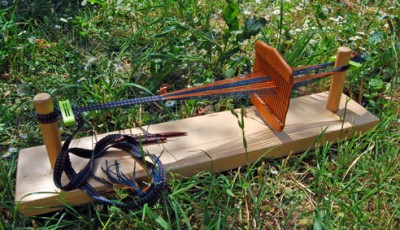 Vill man inte sitta fastspänd fungerar en bräda med två pinnar bra.
Vill man inte sitta fastspänd fungerar en bräda med två pinnar bra. 
 Projektet med de åtta börsarna är slutfört.
Projektet med de åtta börsarna är slutfört. 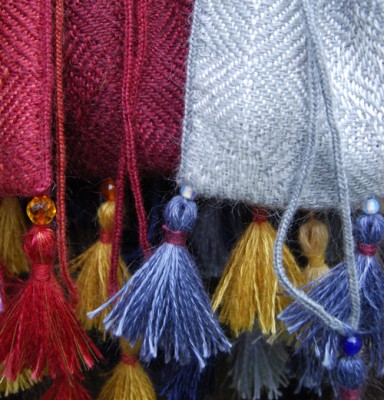
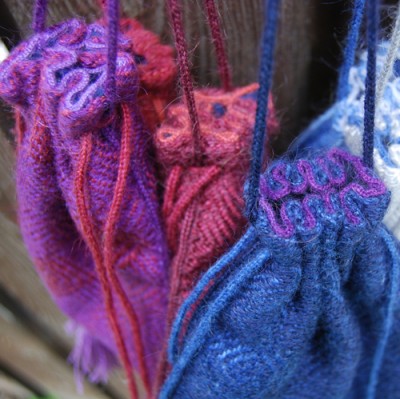
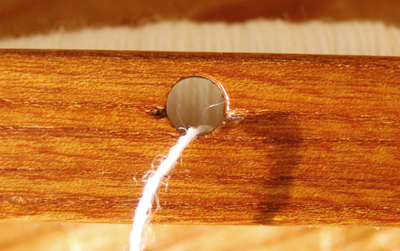


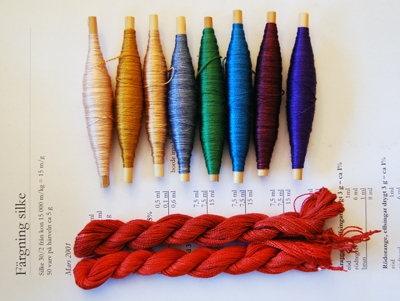



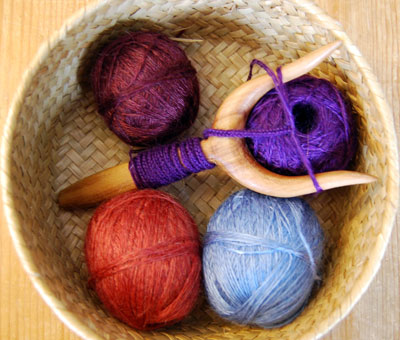
 Jag läste en bok* om handeln i Europa under medeltiden. Där fångade en bild och en bildtext min uppmärksamhet.
Jag läste en bok* om handeln i Europa under medeltiden. Där fångade en bild och en bildtext min uppmärksamhet. Räknebordet med två summor som ska adderas.
Räknebordet med två summor som ska adderas. De två summorna sammanförda och justerade så att det på linjerna finns max fyra marker och mellan linjerna enbart en marker.
De två summorna sammanförda och justerade så att det på linjerna finns max fyra marker och mellan linjerna enbart en marker.